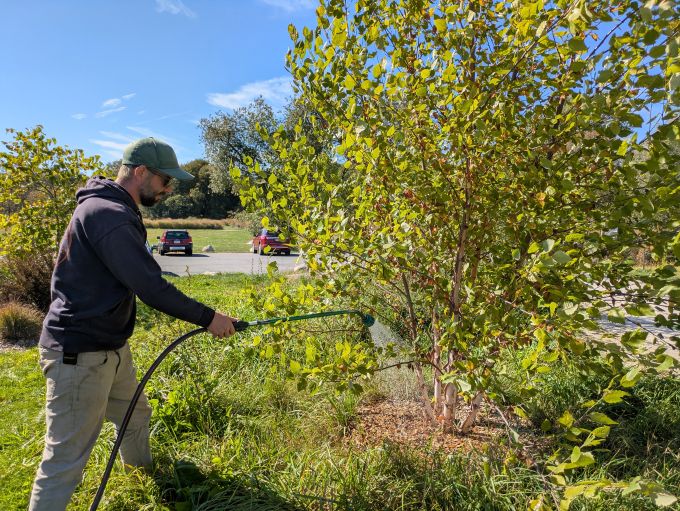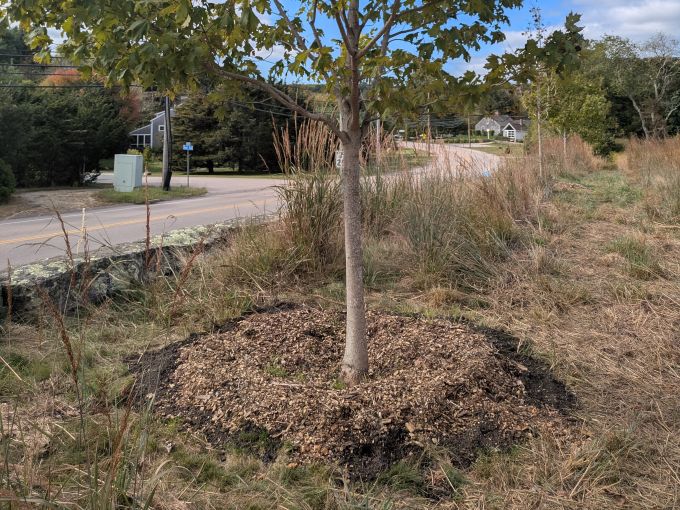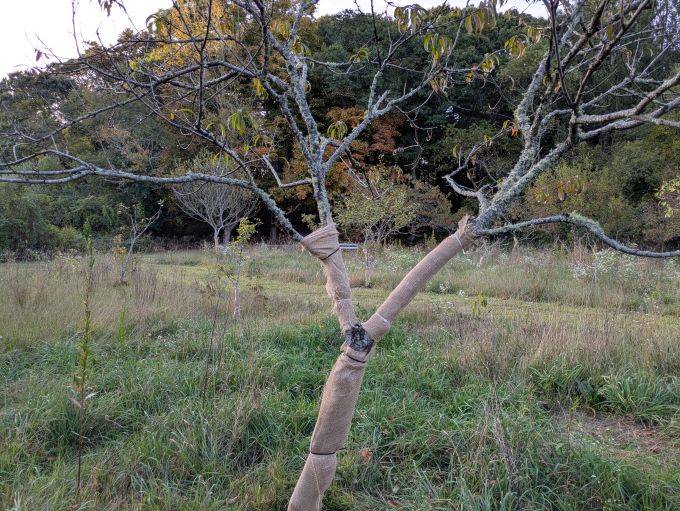Fall is an important time for perennial plants and trees and their health heading into winter. As perennials begin to senesce (programmed cellular death), they put energy into root development and start moving water and sap downward to protect from winter freezes.
While we may think the plants in our garden have properly gone dormant, they still may need some attention, especially newer plantings from the last few years.
continue care into cooler fall days
Summer is plants’ busy time, as the sun creates opportunities for photosynthesis (growth). This summer was hot and extremely dry, and we found ourselves watering the gardens we planted last year quite a bit more than we anticipated.
With some rain and the sun waning it might be tempting to focus on other garden tasks. However, now is not the time though to give up on watering and fertilizing! In fact, it may ensure your tree/shrub/perennial makes it to next spring healthy and happy. When we experience dry summers and falls, I tend to keep an eye on watering needs until we reach late November. See below for some fall plant care tips.


Watering:
- Check weekly for proper soil moisture (Soil Core Tools can be helpful)
- Water deeply, with long, deep soaks at the base and dripline of plants (once a week)
- As we move into late fall, make sure your spigot doesn’t freeze
Plant Health:
- Continue to monitor for pests and diseases
- Use deer/vole protection when necessary
- Add organic matter and mulch to planting beds and base of trees/shrubs
- Fertilize with organic product that has high Phosphorus and Potassium to promote root growth. Nitrogen, which promotes leaf/flowering is not necessary
Pruning/Cutbacks:
- Refrain from pruning trees/shrubs until winter (January/February)
- Leave perennials up until late winter for habitat and aesthetics
- Leave the leaves in place for winter protection and organic matter


